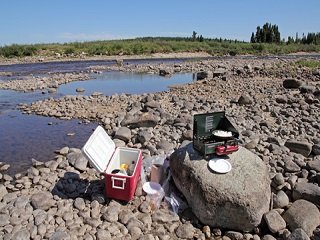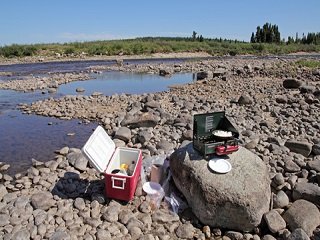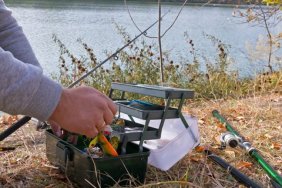 While I thoroughly enjoy the backcountry, there are instances when sitting around the fire with friends and family at an established campsite is ideal. Of course, this option affords you a little more wiggle room, regarding what gear you can bring with you. Coolers, for instance, can help make your next trip to the campsite an enjoyable one, but it helps to pick one that suits your needs. Here are a few tips on how to do that.
While I thoroughly enjoy the backcountry, there are instances when sitting around the fire with friends and family at an established campsite is ideal. Of course, this option affords you a little more wiggle room, regarding what gear you can bring with you. Coolers, for instance, can help make your next trip to the campsite an enjoyable one, but it helps to pick one that suits your needs. Here are a few tips on how to do that.
Soft-sided coolers are ideal for when you need to bring a few drinks and some food to fix one or two meals, or for a night around the campfire. You often see smaller versions of these coolers used to carry lunch to work or school. However, they lack the durability of hard coolers and have lower cooling efficiency. If space is a concern, then a soft-sided cooler is great, but otherwise you’re better off picking up a hard cooler.
Hard-sided coolers tend to be the most popular coolers for campers, and come in metal or plastic models. Metal coolers are known for incredible durability, but are often considerably heavier than plastic ones. Also, metal absorbs and retains heat longer than plastic, which means if you leave a metal cooler in the sun, not only will it warm up faster, but it will retain its heat longer. Most plastic coolers are insulated with high-density foam, and the higher the density, the higher the overall cooling efficiency will be. You should also make sure the lid is insulated and has a tight seal. Furthermore, many opt for hard-sided models with built-in wheels and oversized handles to make transporting them much easier, especially when they’re fully loaded. Also, models that possess a drain plug for emptying water from melted ice are a smart option.
Lastly, you have electric coolers which are ideal for campsites with ready access to an electrical outlet. Such models are also preferred by those who don’t want to worry about replenishing ice to keep the contents cool. Also, they can be plugged into your car’s AC outlet for long drives when you need to keep food cool. The obvious drawback to electric coolers is that once the power is cut off, so is the cooling capacity. How long an electric cooler keeps its contents cool when not connected to a power source depends how full the cooler is and how often you open the lid.
When considering sizes for a cooler, it’s best to think long term. Consider every type of potential use, not just the short-term ones. Avid outdoor enthusiasts should have one small or medium-sized cooler for weekend camping trips and another larger-capacity cooler for extended vacations. Also, anglers and hunters might want to invest in a large cooler to carry large amounts of fish or game meat. Having more than one cooler is also ideal for hot summer days. Having multiple coolers also allows you to use one or two for specific purposes, such as beverages.
As with most outdoor gear, considering the long term and factoring in your frequency of use will play large roles in determining what type of cooler you’ll need. It’s smart to have several sizes on hand, especially if you count yourself among the ranks of outdoorsmen.








